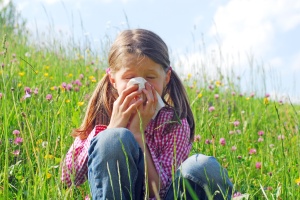If you have allergic rhinitis, your immune system mistakenly identifies a typically harmless substance as an intruder. This substance is called an allergen and your immune system responds to the allergen by releasing histamine and chemical mediators that typically cause symptoms in the nose, throat, eyes, ears, skin and roof of the mouth.
Allergic rhinitis can be triggered by outdoor pollutants such as pollen, dust, air pollution, smoke, etc. Often these irritants are prevalent seasonally. Common indoor allergens such as the dried skin flakes, urine and saliva found on pet dander, mold, droppings from dust mites and cockroach particles are also culprits.
Twenty to 40 million Americans are affected by allergic rhinitis, making it the sixth most prevalent chronic illness.
The peak prevalence of allergic rhinitis is observed in children and young adults. Prevalence estimates range from 10 to 30 percent of adults and up to 40 percent of children, making allergic rhinitis currently the most common chronic condition found in children.
Allergic rhinitis is responsible for at least $1.8 billion annually for the direct cost of physician visits and medication expenses, or nearly 2.5 percent of the $47 billion annual direct cost for respiratory treatment in the United States.
The estimated value of lost productivity to employers and society resulting from allergic rhinitis approaches nearly $3.8 billion annually. In the mid-1990s the resulting total annual cost for allergic rhinitis amounted to $5.6 billion.
